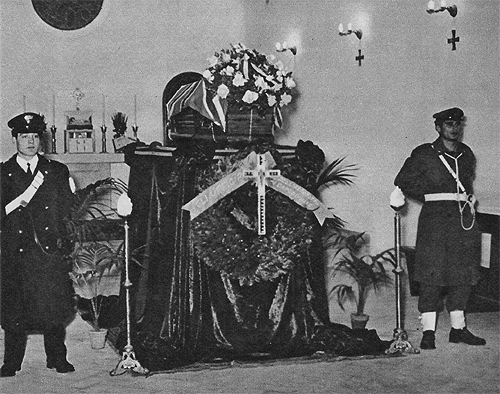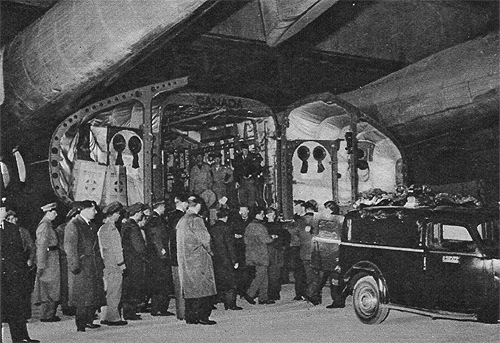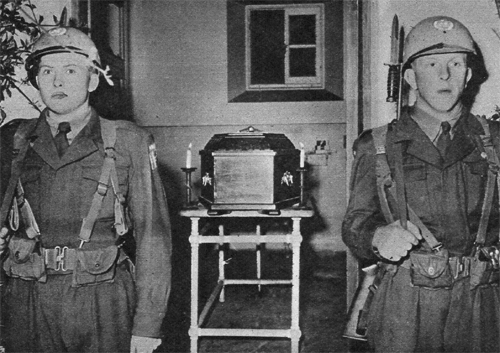"THE MOORHOUSE AFFAIR"
Circumstances of the death of Second
Lieutenant Anthony Moorhouse
1st Btn West Yorkshire Regt in Port Said - December 1956
The “Moorhouse Affair” was a military confrontation
between the United Kingdom and Egypt over the abduction and murder of Second
Lieutenant Anthony Moorhouse in Port Said, Egypt, following the end of British
military operations in the 1956 Suez Crisis.
Anthony Gerard Moorhouse (8 December 1935 – 13 December 1956), a graduate
of Stonyhurst College, was a Second Lieutenant on National Service in the 1st
Battalion West Yorkshire Regiment. His father, Francis Gerard Moorhouse owned
a jam-manufacturing company in Leeds, Yorkshire – Moorhouse’s Jam.
Moorhouse was stationed in Port Said after the 7 November 1956 ceasefire.
On 10 December 1956 Moorhouse had led a raid in Port Said on the premises of
an Egyptian dentist and arrested seven Egyptian commandos. On the following
morning he returned to the scene alone and without military authority where
he was surrounded in his army Land Rover by a crowd of Egyptians, one of whom
took his pistol. He was overpowered and driven off in a civilian car, later
located by British forces.
Lieutenant General Hugh Stockwell, the British Task Force commander and commander
of the British Army’s II Corps, ordered a house-to-house search of a five-block
area and for all males over the age of 15 found there to be detained and questioned.
The searches were unsuccessful in locating the missing officer.
The United Nations also made efforts to obtain information on Moorhouse’s
disappearance. On 22 December 1956 the kidnappers allowed Major Wiks, a Norwegian
UN officer, to see a man in a British uniform claiming he was Moorhouse. After
the encounter the UN officer reported that Moorhouse was “alive and well”.
However, uncertainty remained.
A family friend and former army colleague of the Egyptian President Gamal Abdel
Nasser, the British Member of Parliament Colonel Cyril Banks, traveled to Cairo
in an effort to establish the missing officer’s fate. On Christmas Eve,
24 December 1956, he finally had a meeting with President Nasser who told him
that Moorhouse had died of suffocation when held captive.
On 31 December 1956, Dag Hammarskjold, the Secretary-General of the United
Nations received a report from the Egyptian Army that, after his capture, Moorhouse
was kept with the intention of exchanging him for Egyptian prisoners. When British
troops began to search for him he had been locked in a small metal cupboard;
his captors returned once to feed him but, as the search intensified, they felt
unsafe to return and he was left for two days. When they finally returned they
found him dead, apparently from suffocation, and buried him in the house
where he had been kept prisoner.
According to an account made in 2006 by one of the Egyptian kidnappers, Moorhouse
was captured and then taken to a safe house where he was trussed, gagged and
hidden under the floor. It was never intended to kill him, but to kidnap him
as a hostage to exchange against prisoners held by the British in Port Said.
However, he was left alone and bound by his abductors for four days due to the
curfew and constant British patrols, and when they returned they found him dead.
He was then buried secretly in the Port Said graveyard. In late December 1956,
Banks returned to Egypt to recover Moorhouse’s body and the British government
asked the UN and Swiss government to mediate to recover the body with the Egyptian
authorities.
The Egyptians complied with the UN request on 2 January 1957 and, on 4 January
1957, Moorhouse’s body was flown to Naples, Italy, for formal identification.
On 5 January 1957, British pathologists from Scotland Yard carried out an examination
of teeth, scars, measurements, etc established beyond doubt that the body was
that of Second Lieutenant Moorhouse. The body was flown back to the UK on 6
January 1957.
Lieutenant Moorhouse was buried with full military honours in Lawnswood Cemetery
in Leeds on 10 January 1957, after a service at Leeds Cathedral. His memory
marked in the name of a road, “Moorhouse Close”, in Chester, Cheshire.
A small plaque refers to his “heroic death during the Suez Crisis”
at the right entrance to this cul-de-sac.
This tragedy “aroused furious anger in Britain” and became “a
national symbol of Egyptian deceit”. It led to widespread criticism of
the Eden government from opponents of the Suez invasion. When residents of Port
Said planned to turn the house where Moorhouse had been held into a museum,
British public opinion was further inflamed. Moorhouse’s death also raised
questions regarding President Nasser’s authority and the effectiveness
of the United Nations.
TAKEN FROM THE ILLUSTRATED LONDON NEWS – JANUARY 12, 1957
THE BODY OF LIEUTENANT MOORHOUSE: THE JOURNEY FROM PORT SAID
The body of 2nd- Lieutenant Anthony Moorhouse, who was kidnapped by Egyptians
at Port Said on December 11, was flown to England from Naples on January 6.
The funeral was due to take place at Leeds Cathedral on January 10, and the
body was to be buried at Lawnswood Cemetery with military honours. The body
has been handed over by the Egyptians to United Nation officials at Port Said
on January 2. On January 4 it was flown to Naples in a transport Aircraft of
the Royal Canadian Air Force attached to the United Nations Emergency Force.
A team of medical experts, including the Moorhouse family doctor, had been flown
to Naples to carry out an autopsy. The body was identified as that of Lieutenant
Moorhouse, and it was reported that the British experts confirmed the death
was caused by asphyxia, though no official statement concerning this had been
made at the time of writing.

ITALIAN LAST RESPECTS TO 2ND-LIEUT. MOORHOUSE: THE YOUNG
OFFICER’S BODY LYING IN STATE AT CAPODICINO AIRPORT, NAPLES, BEFORE
BEING FLOWN TO ENGLAND

LIEUTENAT MOORHOUSE’S BODY ARRIVES AT NAPLES:
THE COFFIN BEING MOVED FROM THE R.C.A.F.TRANSPORT AIRCRAFT WHICH HAD
BROUGHT IT FROM EGYPT

AFTER IT HAD BEEN HANDED OVER TO UNTIED NATIONS OFFICIALS:
THE COFFIN WITH LIEUTENANT MOORHOUSE’S BODY LYING IN A CHAPEL
AT PORT SAID UNDER THE GUARD TO TWO NORWEGIAN U.N.E.F. SOLDIERS
|

THE SCENE OF MOORHOUSE’S TRAGIC DEATH IN PORT
SAID: THE CORRIDOR OF THE HOUSE WHERE HE WAS HELD CAPTIVE AND DIED.

.REMOVED FROM ITS TEMPORARY GRAVE AT PORT SAID FOR HANDING
OVER TO UNITED NATIONS OFFICIALS: THE PLAIN WOODEN COFFIN WITH LIEUTENANT
MOORHOUSE’S BODY.
|
Back to Incidents
Back to Main Page




